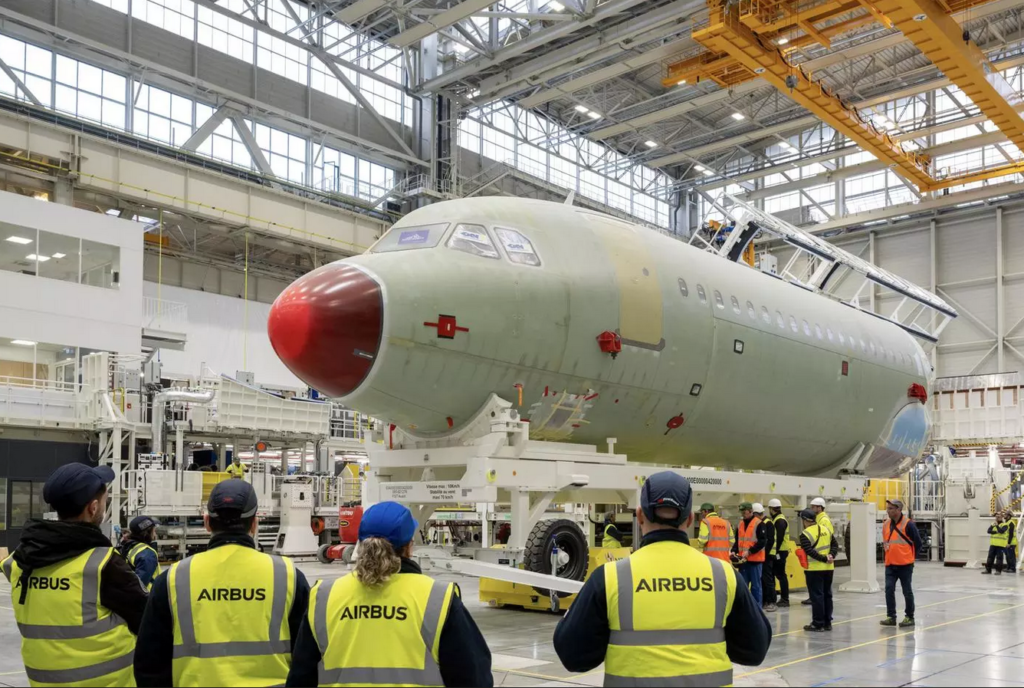
Airbus has inaugurated its new A320 family final assembly line (FAL) in Toulouse.
Installed in the former A380 “Jean-Luc Lagardère” assembly building, the new FAL started initial operations at the end of 2022 with the delivery of the first fuselage sections. The roll-out of the first aircraft fully assembled in this facility – an A321 – is expected to take place by the end of this year. The industrial site will progressively ramp up operations between now and 2025, directly employing around 700 workers.
“The inauguration of this new A321-capable final assembly line in Toulouse represents another milestone in the ongoing modernization of our global industrial system. This FAL will contribute to the ongoing production rate ramp-up to 75 A320 family aircraft per month in 2026, while meeting the increased demand for A321s which currently represents around 60 percent of the total A320 family backlog,” said Airbus CEO Guillaume Faury. “We’re pleased to see this new facility join our worldwide network of final assembly sites which will comprise four FALs in Hamburg, Germany; two in Toulouse, France; two in Mobile, [Alabama], United States; and two in Tianjin, China, all of them capable of assembling the A321.”
According to Forecast International’s Civil Aircraft Forecast, Airbus announced new guidance in early 2023. It plans to increase production of the A320 family to 65 aircraft per month by the end of 2024. At the same time, it revealed plans to boost production again in 2026, this time to 75 per month.
This was the second time the manufacturer delayed its planned production increases for the A320 family. The manufacturer continues to cite a shortage of engines from CFM and Pratt & Whitney as the primary obstacle to the higher rate, but it is likely that a post-pandemic shortage of skilled, experienced workers up and down the supply chain is also a major factor.
Our forecast in the near term is more conservative than Airbus’ projections. Both Airbus and Boeing used to be extremely precise and accurate in their guidance, but since the start of the COVID-19 pandemic, both manufacturers have had difficulty executing on their production plans.
A military history enthusiast, Richard began at Forecast International as editor of the World Weapons Weekly newsletter. As the Internet grew in importance as a research tool, he helped design the company's Forecast Intelligence Center and currently coordinates the EMarket Alert newsletters for clients. Richard also manages social media efforts, including two new blogs: Defense & Security Monitor, covering defense systems and international issues, and Flight Plan, which focuses on commercial aviation and space systems. For over 30 years, Richard has authored the Defense & Aerospace Companies, Volume I (North America) and Volume II (International) services. The two books provide detailed data on major aerospace and defense contractors. He also edits the International Contractors service, a database that tracks all the contractors involved in the programs covered in the FI library. More recently he was appointed Manager, Information Services Group (ISG), a new unit that encompasses developing outbound content for both Forecast International and Military Periscope.



